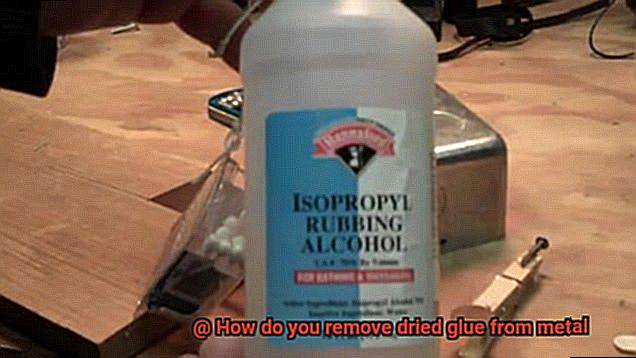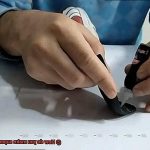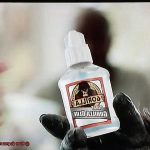Got a metal surface covered in dried glue? Don’t panic. Whether you’re a DIY enthusiast or just someone who accidentally made a sticky mess, I’ve got your back. Removing dried glue from metal can be a bit of a challenge, but fear not. In this comprehensive guide, we’ll explore some easy-peasy DIY tricks and even some pro methods to help you restore your metal objects to their former glory.
Removing dried glue from metal requires a delicate touch to avoid damaging the surface. So, here are some tried and tested methods that won’t let you down:
- Warm Soapy Water: Let’s start with the basics – soak the affected area in warm soapy water. Grab a sponge or cloth and gently scrub away that stubborn glue residue. As the glue softens, you can peel or scrape it off using your fingers or a plastic scraper. This method works wonders for smaller glue spots and less stubborn adhesives.
- Vinegar Solution: When things get stickier, it’s time to bring out the vinegar power. Soak a cloth or cotton ball in white vinegar and place it over the dried glue. Give it a few minutes to work its magic and soften that pesky adhesive. Then, grab an old toothbrush or plastic scraper and scrub away the softened residue. Repeat if necessary, and wipe the surface clean with a damp cloth.
- Rubbing Alcohol: If the glue is still clinging on for dear life, don’t worry – rubbing alcohol is here to save the day. Dab a small amount of rubbing alcohol onto a cotton pad and gently apply it to the affected area. The alcohol will dissolve the adhesive, making it easier for you to scrape it off with your nails or a plastic scraper. Just be careful not to go overboard with the alcohol as it might damage painted or coated metal surfaces. Always do a small test in an inconspicuous area before going all in.
- Acetone: When all else fails, it’s time to bring out the big guns – acetone. But beware, acetone is a strong solvent that can wreak havoc on certain metal finishes or painted surfaces. Apply a small amount of acetone to a cotton pad or cloth and gently dab the glue. Let it sit for a minute, then use your nails or a plastic scraper to remove the softened glue. Don’t forget to thoroughly clean the surface
Types of Glue and Metal Surfaces
Contents
- 1 Types of Glue and Metal Surfaces
- 2 Heat Method for Removing Dried Glue from Metal
- 3 Solvents and Adhesive Removers for Removing Dried Glue from Metal
- 4 Abrasive Materials for Removing Dried Glue from Metal
- 5 Homemade Solutions for Removing Dried Glue from Metal
- 6 Precautions When Removing Dried Glue from Metal
- 7 Benefits of Professional Removal Services for Dried Glue on Metal
- 8 Conclusion
In this comprehensive guide, we will take a closer look at the various types of glue available and how they interact with different metal surfaces. So, grab your safety goggles and join us on this thrilling journey.
Epoxy Glue – The Stalwart Wonder:
Picture a glue that can withstand scorching heat, harsh chemicals, and even the unforgiving outdoors. That’s precisely what epoxy glue offers. It possesses the strength of a superhero, forging unyielding bonds between metal surfaces, resulting in a connection that is robust and long-lasting. Epoxy glue is particularly ideal for metal-to-metal projects, as it comes in two parts that must be meticulously mixed before application. Remember, adhering to the instructions is crucial.
Super Glue (Cyanoacrylate) – The Swift Fix:
When time is of the essence and an instant bond is imperative, super glue comes to the rescue. This remarkable adhesive works like magic upon contact with moisture, making it perfect for metals such as stainless steel, aluminum, and copper. However, exercise caution when utilizing super glue on porous or low-energy surfaces, as its effectiveness may be compromised. Choose your metal wisely for each mission.
Construction Adhesive – The Heavy-Duty Champion:
If you find yourself embarking on a grand project involving construction or metalworking, look no further than construction adhesive – your heavyweight champion. This formidable glue boasts exceptional durability and can withstand extreme temperatures and water with ease. You will require a trusty caulking gun to apply it, but once it adheres to the surface, rest assured that it will not let you down.
Silicone Adhesive – The Flexible Ally:
When it comes to sealing and bonding metal surfaces, silicone adhesive proves to be an invaluable ally. Its flexibility allows for a secure, waterproof seal, making it highly sought after in various industries like plumbing and automotive.
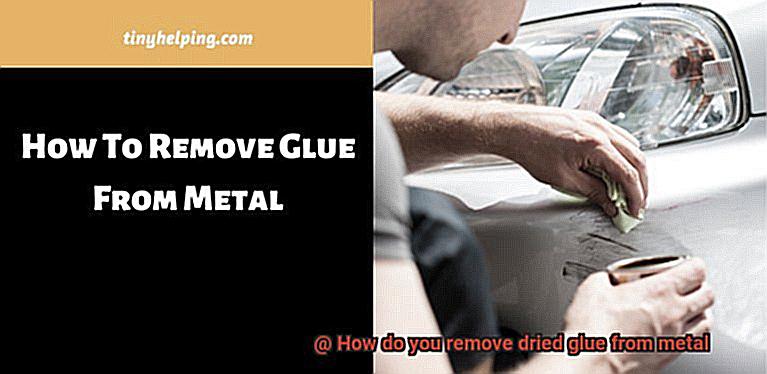
Furthermore, silicone adhesive is capable of withstanding high temperatures, rendering it a formidable weapon in your arsenal. Whether you’re working with glass or in need of a robust seal, silicone adhesive stands as your secret weapon.
You are now privy to the secrets of glue and metal surfaces.
From epoxy glue’s exceptional strength and super glue’s rapid bonding capabilities to construction adhesive’s unwavering toughness and silicone adhesive’s flexible nature – there exists a fitting adhesive for every metal project.
Always remember to select the appropriate glue for your specific metal surface and adhere closely to the instructions provided.
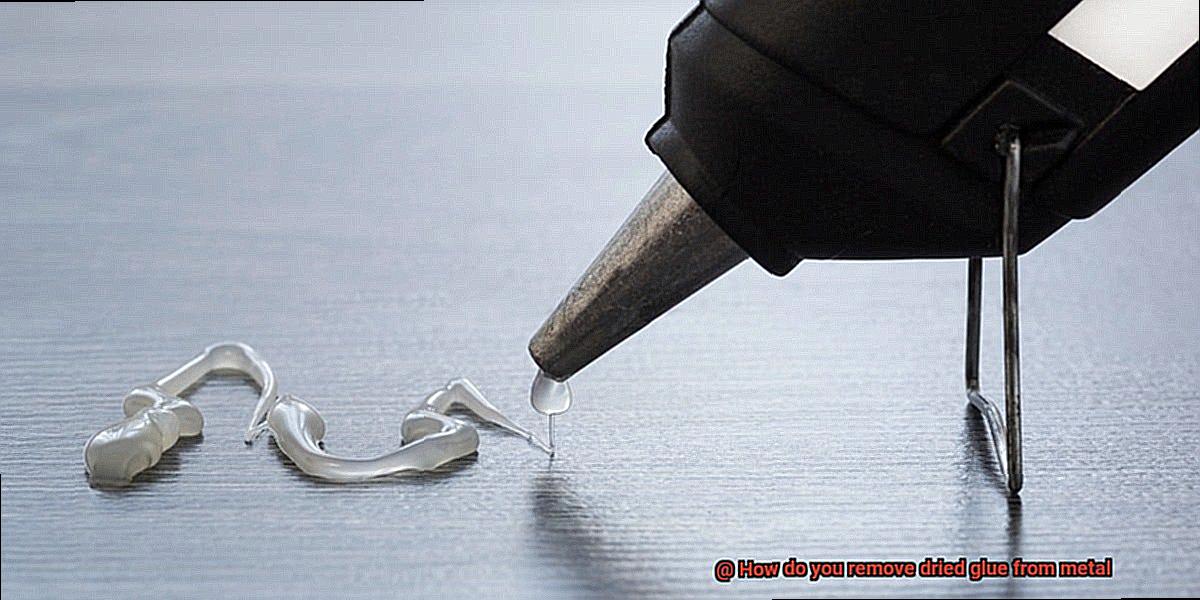
Heat Method for Removing Dried Glue from Metal
Glue, the unsung hero of many projects, can quickly turn into a formidable adversary when it finds its way onto metal surfaces. But fret not, my inquisitive comrades, for I bring you the solution: the heat method. Imagine wielding a heat gun or hairdryer like a mighty warrior, softening that stubborn dried glue and banishing it from your metallic treasures.
But before embarking on this epic journey, let us delve into the steps involved and the safety precautions necessary for a successful adhesive conquest.
The Heat Method Unveiled:
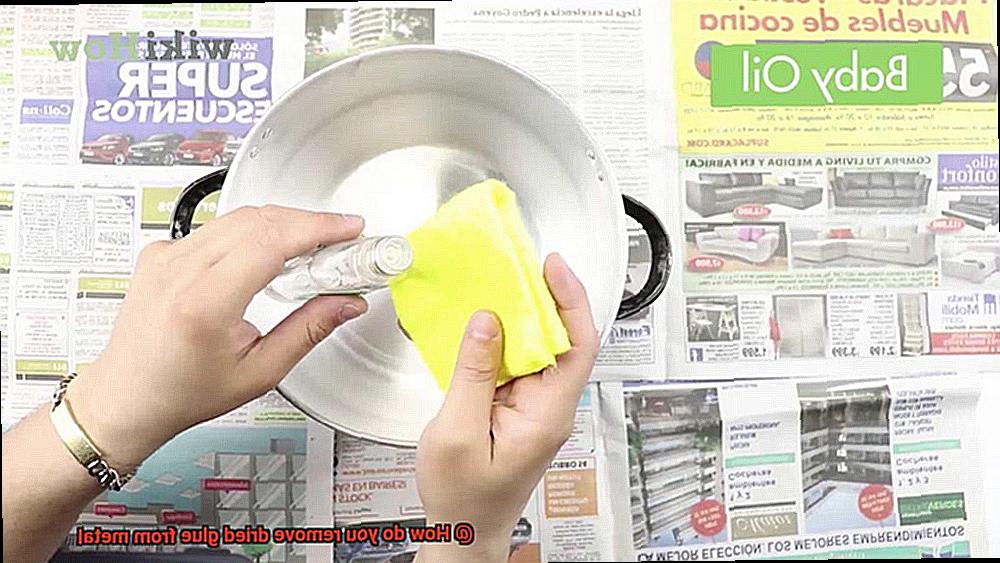
Step 1: Arm yourself with the essentials
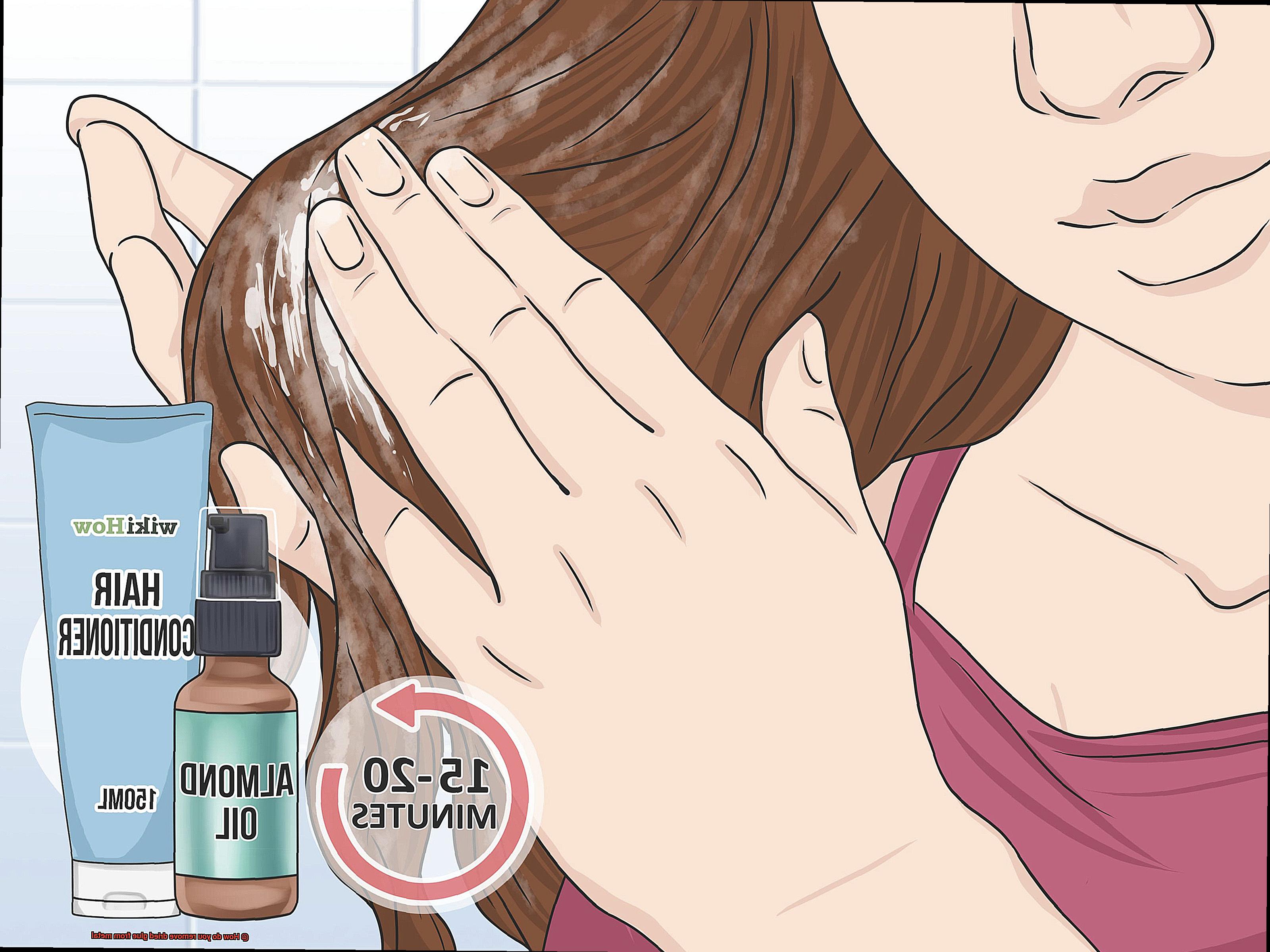
Prepare for battle by equipping yourself with a trusty heat gun or hairdryer set to high heat. And do not forget your loyal sidekick, a plastic scraper or credit card, ready to aid in the removal process.
Step 2: Ignite the flames of victory
Channel the scorching hot air from your chosen heat source onto the dried glue. Keep the heat source in constant motion, dancing across the surface, to avoid overheating and causing collateral damage. Remember, patience is your greatest ally.
Step 3: Unleash the power of softening and scraping
As the glue succumbs to the fiery onslaught, it will yield and become more pliable. Seize this moment of weakness and wield your plastic scraper or credit card with finesse. Gently glide it over the softened glue, carefully peeling away its grip without marring the metal’s pristine surface.
Step 4: Repeat until triumphant
If any remnants of stubborn glue persist, fear not. Rekindle the flames of victory by reapplying heat and resuming the scraping process. Repeat this cycle until your metal surface stands unburdened by any trace of adhesive and gleams triumphantly.
Safety Precautions:
Test, test, test.
Before embarking on the full-scale assault, always test a small, inconspicuous area to ensure the metal can withstand the heat without succumbing to its fiery embrace.
Shield thyself.
Don protective gloves and eyewear, shielding yourself from unforeseen mishaps that may arise during your adhesive crusade.
Embrace the winds of ventilation
Ventilation is paramount. Engage in battle within a well-ventilated area to safeguard against inhaling any fumes that may emerge during the heated conflict.
Keep the inferno contained
Keep flammable materials at a safe distance, ensuring they do not encroach upon your battleground. By doing so, you safeguard against any inadvertent conflagration that may threaten the very essence of your mission.
Solvents and Adhesive Removers for Removing Dried Glue from Metal
Glue mishaps can strike at any moment, leaving your metal surfaces marred by unsightly dried glue. But fret not. A heroic duo stands ready to save the day – solvents and adhesive removers. In this captivating journey, we will explore the enchanting world of these remarkable solutions, guiding you towards freedom from the clutches of dried glue.
Acetone – The Glue Vanquisher:
Behold, the mighty acetone. With its formidable powers, it can dissolve an array of adhesives, including super glue and epoxy. Like a fierce warrior, it fearlessly breaks down the chemical bonds of dried glue, leaving your metal surfaces pristine once more. However, beware its strength, for it may dissolve certain types of paint or finishes.
Isopropyl Alcohol – The Gentle Warrior:
In the realm of solvents, isopropyl alcohol emerges as a valiant ally. Known as rubbing alcohol, it possesses a more delicate touch than acetone. Fear not, for it still wields enough power to dissolve many types of glue and adhesive residues without harming most metal surfaces. Though not as potent as acetone, it remains a formidable opponent against stubborn glues.
Commercial Adhesive Removers – The Special Agents:
Should you desire ready-to-use solutions tailored specifically for metal surfaces, look no further than commercial adhesive removers. These magical elixirs come in gel or liquid form, designed to vanquish glues without harming the precious metal beneath. Simply apply them with a cloth or sponge and watch as they work their enchantment.
The Art of Application:
As with any quest, following instructions is essential when wielding solvents or adhesive removers. Some products require time to fully break down the glue, while others may necessitate gentle scrubbing or scraping. Before embarking on your journey, test the product on a small, inconspicuous area to ensure it doesn’t unleash unintended consequences upon your noble metal surfaces.
The Final Showdown:
Once the glue has been softened and defeated, the battle is not yet won. Thoroughly cleanse the metal surface to rid it of any residue from the solvent or adhesive remover. Employ soap and water or a mild detergent, rinsing the surface until it gleams with victory. Allow it to dry completely before adorning it with paint or finishes, securing a triumphant conclusion to your quest.
Abrasive Materials for Removing Dried Glue from Metal
When it comes to removing dried glue from metal surfaces, there are several abrasive materials that can come to your rescue. Let’s embark on an exciting adventure through the world of abrasives and discover the tools that will help you restore your metal surfaces to their former glory.
One of the most commonly used abrasive materials is sandpaper. With its varying grits, ranging from coarse to fine, sandpaper offers you the flexibility to choose the level of abrasiveness that suits the severity of the glue residue. Start with a coarser grit to tackle the bulk of the glue and gradually work your way up to finer grits for a smooth finish.
For curved surfaces, emery cloth is your go-to abrasive material. Its flexible nature allows it to conform to any shape, making it perfect for removing dried glue from metal. Just like sandpaper, begin with a coarser grit and progress to finer ones as needed.
Steel wool is another fantastic option for tackling dried glue on metal surfaces. Available in various grades, it provides fine grades for lighter glue residues and coarser ones for more stubborn deposits. Remember to handle steel wool gently to avoid scratching the metal surface.
When faced with large or hardened glue deposits, wire brushes are your best friend. Opt for brass or stainless steel bristle brushes, as they are less likely to leave scratches on your metal surface.
As you venture into the realm of abrasive materials, exercise caution to prevent any damage. Test your chosen abrasive material on a small, inconspicuous area before proceeding with the entire surface. And don’t forget your protective gear – gloves and safety glasses are essential for a safe working environment.
Once you’ve successfully removed the dried glue, it’s time for a thorough clean-up. Use a mild detergent or solvent to eliminate any residual glue particles and abrasive debris. Rinse the surface thoroughly and ensure it is completely dry before moving on.
Homemade Solutions for Removing Dried Glue from Metal
Don’t worry. In this article, we’ll explore effective homemade solutions that can help you remove dried glue from metal. Say goodbye to unsightly adhesive residue and hello to a gleaming surface. Let’s dive in.
Vinegar:
Soak a cloth in vinegar, a natural acid that breaks down glue’s adhesive properties. Apply it to the dried glue, let it sit, and gently scrub off the softened glue with a brush or rag.
Rubbing Alcohol:
Dissolve glue with rubbing alcohol. Apply it to a cloth or cotton ball and rub onto the dried glue until it loosens. Scrape off the softened glue using a plastic scraper or fingernail.
Nail Polish Remover:
Use nail polish remover containing acetone if vinegar or rubbing alcohol aren’t available. Soak a cloth or cotton ball, dab it onto the dried glue, wait a few minutes, and gently scrub off the softened glue.
Baking Soda:
Create a paste with baking soda and water. Apply it to the dried glue, wait a few minutes, and scrub off the softened glue with a brush or cloth. The abrasiveness of baking soda aids in breaking down the glue.
Lemon Juice:
Lemon juice’s acid dissolves adhesive properties. Squeeze some onto a cloth or sponge and rub it onto the dried glue until it loosens. Wipe away the softened glue with a damp cloth.
Heat Gun or Hairdryer:
Apply heat from a heat gun or hairdryer to soften the dried glue for a few seconds. Scrape off the softened glue using a plastic scraper or fingernail. Be cautious not to apply excessive heat that can damage the metal surface.
Precautions When Removing Dried Glue from Metal
Before you engage in this battle, it’s crucial to take some precautions to ensure a safe and successful glue-removing mission.
First and foremost, protect yourself with a pair of sturdy gloves. Glue removers can be potent and contain harsh chemicals that can wreak havoc on your skin. So, suit up and safeguard those precious hands.
Ventilation is key. Make sure you’re working in a well-ventilated area to prevent inhaling any fumes that may accompany the glue remover. Open those windows wide or crank up that fan to get that air circulating. We want fresh air, not fumes invading your lungs.
Before going all-in, perform a little test run. Apply the glue remover to a small, inconspicuous area of the metal surface. This will help you avoid any unpleasant surprises like discoloration or damage. No one likes an unwelcome surprise, especially when it comes to their metal treasures.
Don’t forget to read the instructions carefully. Different glue removers have their own rules and recommendations for optimal results. So, give those instructions the attention they deserve and follow them like a seasoned pro.
When applying the glue remover, treat your metal buddy with care. Use a soft cloth or sponge and gently rub the affected area. There’s no need for Hulk-like strength here – excessive force or abrasive materials can scratch or damage the metal surface. Let’s keep it shiny and scratch-free, shall we?
Once you’ve vanquished that dried glue, it’s time for a thorough cleaning session. Grab some mild soap and water and give your metal surface a good scrubbing. This will remove any residual residue from the glue remover and bring back that original sparkle.
Last but certainly not least, proper disposal is crucial. Dispose of any leftover glue remover and used materials according to local guidelines for hazardous waste disposal. Let’s do our part in keeping our planet happy and healthy.
Benefits of Professional Removal Services for Dried Glue on Metal
When it comes to battling dried glue on metal surfaces, it can often feel like an uphill battle. But fear not, because professional removal services are here to save the day and make your life a whole lot easier. So what exactly are the benefits of hiring these experts for removing dried glue from metal? Let’s dive in and find out.
First and foremost, professional removal services bring expertise and experience to the table. They have the knowledge and skills to safely and effectively remove dried glue from metal surfaces without causing any damage. With their understanding of different types of glue and their properties, they can choose the most suitable method for removing them.
But it doesn’t stop there. These professionals also have access to specialized tools and equipment that are specifically designed for removing glue from metal. By using these tools, they ensure a thorough and efficient removal process, leaving your metal surfaces clean and pristine.
One of the biggest advantages of hiring professional removal services is the time and effort you save. Instead of wasting hours trying different DIY methods, these experts can quickly assess the situation and determine the best course of action. Say goodbye to trial and error.
Moreover, professional removal services provide guidance on preventive measures to avoid future glue-related issues on metal surfaces. They can recommend products or techniques that will protect your metal items from future glue damage. It’s like having your own personal glue prevention advisor.
Another benefit is the peace of mind that comes with hiring professionals. You can rest easy knowing that the job will be done properly, without any risk of damaging your valuable metal items. These experts ensure a clean and seamless finish, leaving no traces of glue residue behind.
Furthermore, many professional removal services offer guarantees or warranties on their work, providing added assurance and protection for customers. This gives you confidence in their ability to deliver high-quality results.
Last but not least, hiring professional removal services for dried glue on metal can be cost-effective in the long run. While there may be a service fee involved, it eliminates the risk of potential damage to the metal surface that could result in costly repairs or replacements. It’s a small price to pay for peace of mind and a job well done.
xIEcdSG77os” >
Conclusion
Don’t let dried glue ruin your metallic masterpieces. With some savvy techniques and nifty tools at your disposal, you can effortlessly banish those sticky remnants from your precious metal surfaces. One tried-and-true approach involves harnessing the power of acetone or nail polish remover – they’re like superheroes swooping in to dissolve that stubborn adhesive mess. Soak a soft cloth in this magical liquid elixir and gently massage it onto the afflicted area; watch as that once-stubborn glue surrenders its grip under your expert touch.
But wait. There’s another trick up our sleeves – heat. Grab hold of a trusty hairdryer or heat gun (no capes required) and unleash a gentle flow of warmth upon the glue. As it basks in the heat, the adhesive becomes more pliable, begging you to remove it with ease. Just remember to tread lightly, for too much heat can be detrimental to your beloved metal.
Still locked in battle with that pesky glue? Fear not. Arm yourself with a plastic scraper or perhaps even a credit card – these nimble warriors will scrape away the dried glue without leaving any unsightly scars on your precious metal surface.

